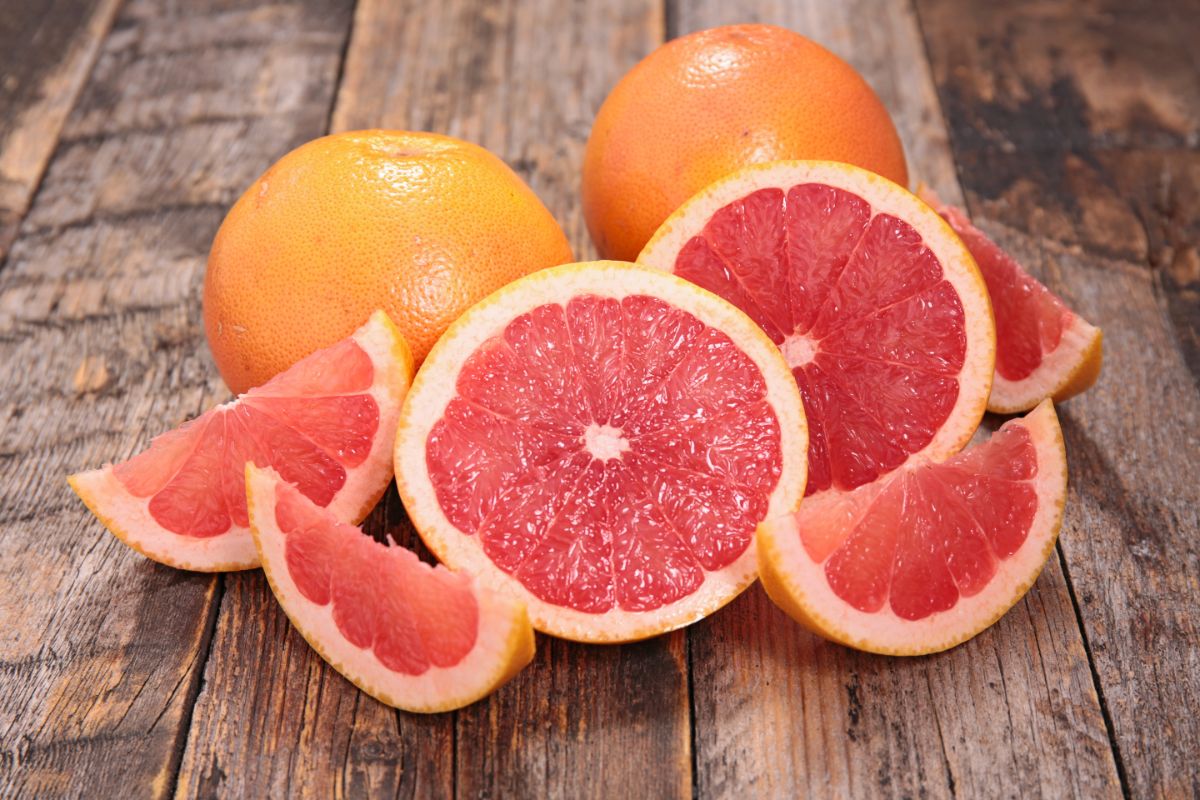When canning grapefruit, peel clean grapefruits, separate the segments, and remove the pith and seeds. Pack the fruit segments into hot jars and cover them with hot syrup, leaving ½-inch headspace. Bring the canning water to a boil and process the jars for 10 minutes, adjusting for elevation.
Should Grapefruits Be Water Bath Canned or Pressure Canned?
Like other citrus fruits, grapefruits are acidic enough to be canned using either a pressure canner or a boiling water bath canner. The National Center for Home Food Preservation has a recipe for canning equal parts of grapefruit and oranges using both types of canners.
Print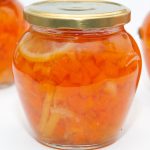
Home Canning Grapefruit Recipe
- Total Time: 25 minutes
- Yield: 9 pints or 7 quarts 1x
Description
Canning grapefruit at home is easy and takes minimal time and ingredients. Use this handy recipe to guide you through the process for succulent, juicy, canned grapefruit.
Ingredients
- 13–15 pounds of fresh grapefruits
- 10½ cups water
- 1¼ cups sugar
Instructions
- Choose the best fresh grapefruits that are mature, firm, ripe, and have a slight give when pressed. You’ll need 13 pounds of canning fruit for a 9-pint load or 15 pounds for a 7-quart canner load.
- Wash 9 pint jars or 7 quart jars with their ring bands and new canning lids using warm water and soap. Rinse everything in warm water.
- Check that your water bath canner is in good condition, and load it with a clean canning rack. Fill the canner halfway with clean water. Put the canning jars in the canner and apply medium-high heat to bring the water to a constant simmer at 180°F.
- Use lukewarm water to wash the grapefruit and rinse them using cool running water.
- Peel the grapefruits using a sharp knife or citrus peeler. Separate the fruits into segments. Remove as much white as possible, including the membranes and pith, as these parts are bitter and spongy.
- For easy packing and to avoid floating, try to keep the same-size segments together to go into the jars.
- If preferred, remove the seeds from the segments. Save the grapefruit juice that oozes out during de-seeding and use it in the syrup. Discard the seeds.
- Make a simple syrup in a large stainless steel pot. Add water and sugar to the pot and heat them while stirring occasionally until all the sugar dissolves. Use the following guidelines for making medium, light, or very light syrup:
Syrup Ratios: 9-pint Load
- Very light syrup: 6½ cups water and ¾ cups sugar
- Light syrup: 5¾ cups water and 1½ cups sugar
- Medium syrup: 5¼ cups water and 2¼ cups sugar
Syrup Ratios: 7-quart Load
- Very light syrup: 10½ cups water and 1¼ cups sugar
- Light syrup: 9 cups water and 2¼ cups sugar
- Medium syrup: 8¼ cups water and 3¾ cups sugar
Filling and Packing the Jars
- Take out the hot jars, dry them, and fill them with grapefruit segments. Try filling each jar with segments of the same size. Packing the segments tightly will prevent floating after heating, which may tamper with the seals.
- Ladle the hot syrup over the citrus fruits, allowing ½-inch headspace.
- Use a wooden skewer to remove air bubbles from each jar.
- Wipe the rim of each jar with clean paper towels dipped in vinegar to reduce the incidence of false seals.
- Place new canning lids on the jars and cover them with ring bands to a finger-tip tight position.
- Using canning tongs to lower each jar into the canner as soon as you cover it with the lid and band. Avoid turning or tilting the jars. Ensure the canner is still at a simmer and the jar tops are submerged 1-2 inches in hot water.
- Apply high heat under the canner and bring it to a constant boil. Close the canner’s lid and start your timer to process both pint and quart jars with the following altitude and time adjustments:
Processing Times for Raw-pack Grapefruits in a Water Bath Canner
- 0 – 1,000ft: 10 minutes
- 1,001 – 6,000ft: 15 minutes
- Above 6,001ft: 20 minutes
Post Processing
- After the timer stops and you haven’t lost the boil, get the canner off the heat and remove the lid. Allow 5 minutes for steaming. Remove the jars one by one using a jar lifter or canning tongs. Place them on a raised, flat surface covered with warm cloth towels.
- Let the jars cool undisturbed and away from draft or air conditioning for 12-24 hours. Do not retighten the lids.
- Remove each ring band to check the condition of the lids. Press the lids down and check for flexing. Refrigerate any jars that have lids that flex, and eat the grapefruit within 3-5 days.
- Wash the perfectly sealed jars under cool running water without tampering with the lid. Dry the jars and label them with the contents and canning date. Keep the canned grapefruit jars in a cool, dark, dry place.
Notes
The nutritional facts for canned grapefruit will vary depending on the type of syrup you choose.
- Prep Time: 15 minutes
- Canning Time: 10 minutes
Is it Safe to Can Grapefruits?
Yes – it’s perfectly safe to can grapefruits in a boiling-water canner or pressure canner because they are high-acid fruits. All citrus fruits are acidic enough and safe to can using the same devices. You may can citrus fruits like mandarin oranges, oranges, lemons, and limes.
The juices of these fruits are also safe for canning. Try canning recipes like grapefruit, lime, orange, mandarin, and lemon juice. Additionally, if you love citrus marmalade and curd, try canning lemon curd for its bright flavor.
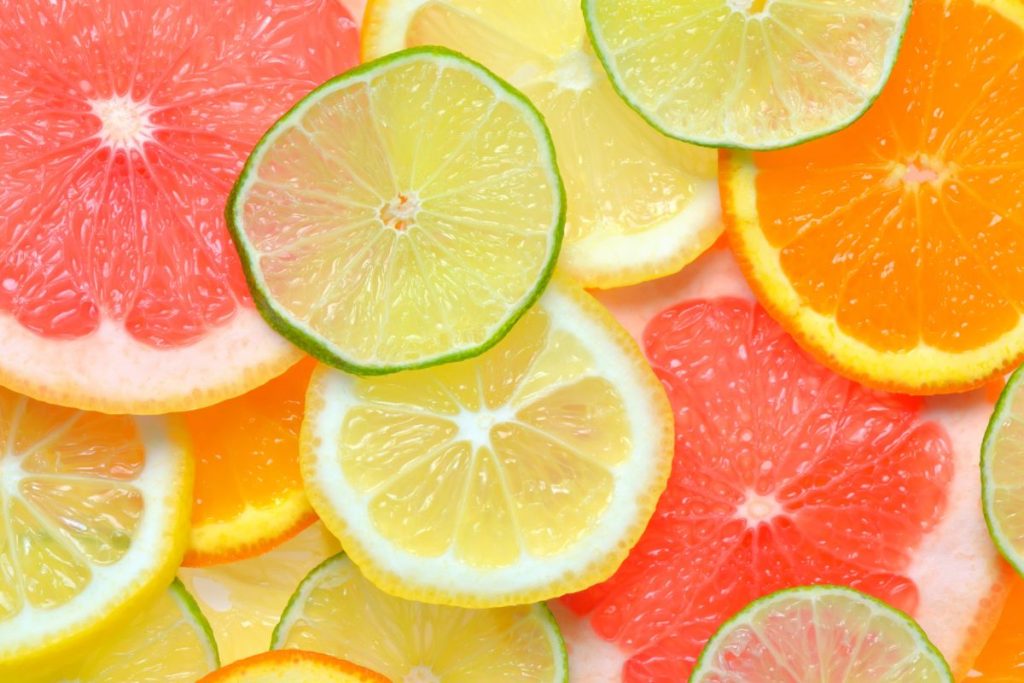
What is the Best Way to Preserve Grapefruit?
The best way to preserve grapefruit at home is to dehydrate it for a shelf life of up to one year. Although freeze-drying is much better than dehydrating, most homesteading families do not have freeze-dryers because they are costly.
Fermenting is another ideal way to preserve citrus fruits like grapefruit, oranges, and lemons. For example, the salty and acidic brine produced during fermentation helps keep lemons for 6-12 months in the pantry or refrigerator.
Avoid freezing grapefruit for extended periods because the water inside their cells expands and crystallizes, causing discoloration and a soft, slimy texture to develop.
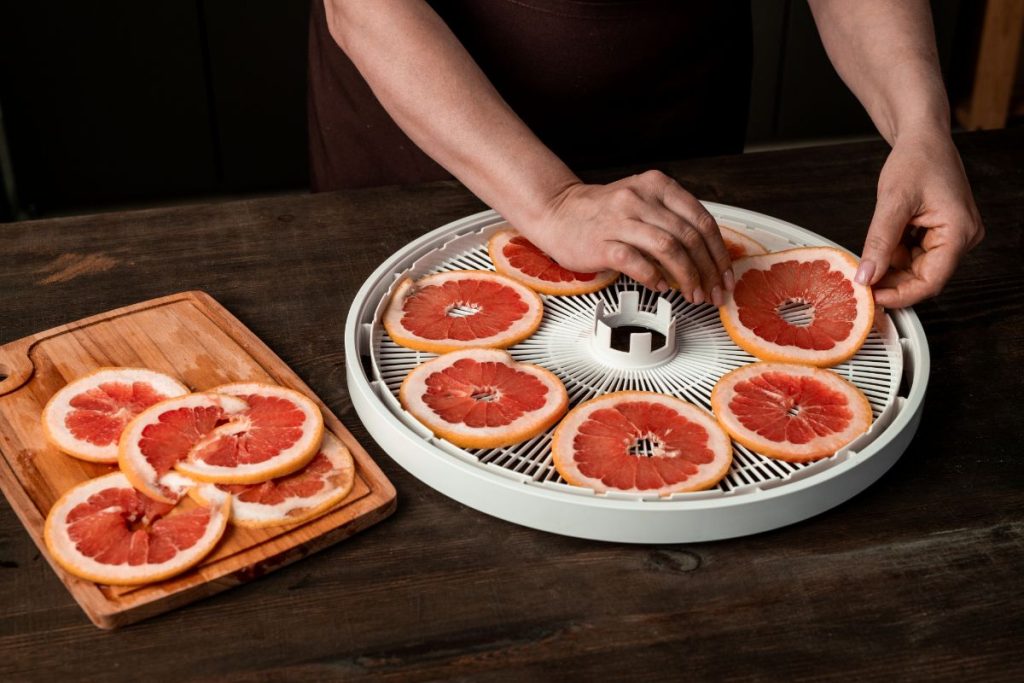
How Do You Prepare Grapefruit for Canning?
Preparing grapefruits for canning can be tricky, especially peeling and removing the pith.
- First, wash the fruits in lukewarm water to remove dirt, bugs, and pesticides.
- Hand-peeling grapefruits becomes easier if you blanch them. Dip the whole fruits in boiling water for a minute, and right after, dunk them in an ice bath to end the cooking process and make them comfortable to handle.
- Make four shallow cuts from the tip to the bottom of each fruit to make peeling the skin easier. Blanching also loosens the white membrane and makes it easier to remove alongside the skin. Any leftover whites can be removed by hand.
- Use your fingers to pull the segments apart. Alternatively, cut the fruit in halves along the membrane with a sharp knife.
- Use kitchen scissors to pinch off the bitter, white part in the center.
- De-seeding grapefruits is optional. If preferred, use a pointed knife to ease the seeds out while minimizing damage to the flesh.
Hot Pack vs. Raw Pack for Canning Grapefruit
The raw pack method is better when canning grapefruit using a hot water bath canner.
You can use either the hot or raw pack method if you are canning grapefruits with a pressure canner. The hot pack method prevents floating after the segments shrink and become buoyant. The segments shrink when cooking with the syrup.
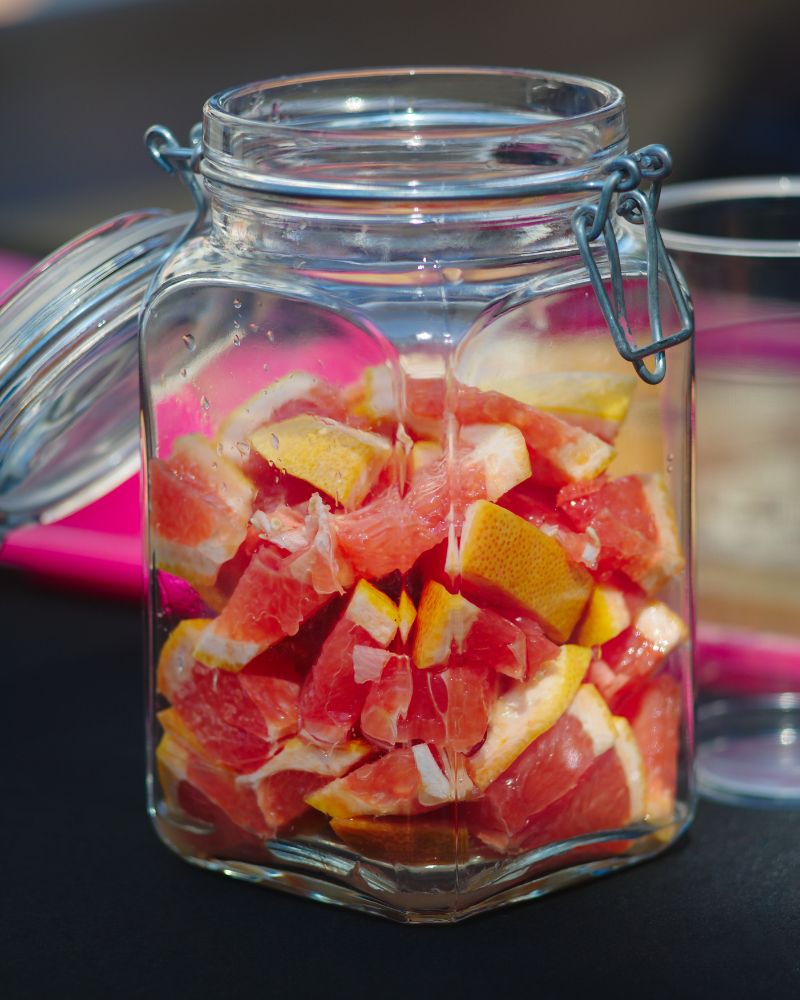
What Are the Benefits of Canning Grapefruit?
As with other citrus fruits, canning grapefruits offers several benefits:
- Antioxidant lycopene has anti-cancer properties
- Beta-carotene found in grapefruit converts into vitamin A and helps reduce macular degeneration.
- Canned grapefruits last longer and keep better than their fresh and frozen counterparts.
- Canned grapefruits require less storage space.
- Citrus peels can be saved and dehydrated to make citrus zest or powder for baked goods, spicing oatmeal cereal, or garnishing ice cream.
- Grapefruits are rich in potassium, fiber, flavonoids, and antioxidants.
- Grapefruits may help control blood sugar content and improve insulin resistance.
- Grapefruits may improve cholesterol levels in people who have atherosclerosis.
How to Store Canned Grapefruit
Canned grapefruit should be kept in a cool, dry, dark place away from direct sunlight and heat sources. Keep the temperature in the storage area set between 50-70°F. Store canned jars of grapefruit off of the ground to prevent corrosion of metal lids.
What is the Shelf Life of Canned Grapefruit?
Canning grapefruit makes it shelf stable for up to 12 months at room temperature. For optimum nutritional value and flavor, use the fruit within six months.

